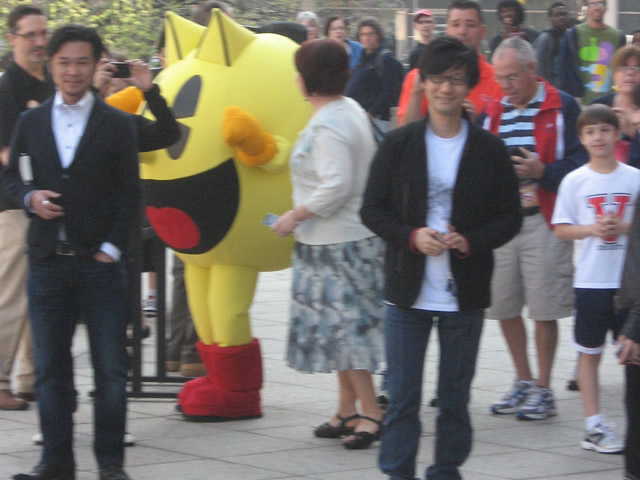In which I meet Rand Miller: The Obscuritory goes to The Art of Video Games 
This weekend, the Smithsonian Museum of American Art opened an exhibit on The Art of Video Games. I hugely recommend it; though physically small, it’s enormous in scope and successfully curates the entire four-decade history of video games into a manageable, hour-long primer that sums up the artistic limits and triumphs of the game medium.
Most interestingly, the opening ceremonies included a series of panel discussions with notable video game dignitaries such as Hideo Kojima and Ken Levine. I had the honor and privilege to attend the first panel, a discussion of the halcyon days of computer and video games featuring some of the key figures in the development of early terminal games and the Intellivision, as well as Rand Miller, the creator of Myst. Apart from the novelty of hearing from such distinguished professionals, the panel offered a few tantalizing insights. Namely that all the early days of game development were indeed chaotic, improvised, and eked out under the technical limitations of the day.
Everyone at the panel agreed that in the early days of the game industry, they flew by the seat of their pants. They of course took their jobs seriously, but the process was very much a creative experiment where the developers still hadn’t quite understood the limits of their hardware. Current Intellivision rights holder Keith Robinson even admitted that “we were making it all up.” For instance, Mattel apparently hired a former piano player who took six weeks of programming courses. Or in another case, Don Daglow, one of the Intellivision development heads, used an exercise from his middle school social studies class as inspiration for the first ever tile-based strategy game. Even Miller, who first appeared on the scene as the head of Cyan, apparently developed weird unreleased garage games for some time (he mentioned a game called Swarm where the player fought killer bees).
I don’t mean to suggest that early game developers were amateurs or didn’t know what they were doing. Rather, they were blindly fumbling through a new field that no one fully understood yet. Their stories embody the spirit of everything The Obscuritory celebrates: the ordered chaos of the waxing days of game development created a fun, hyperactive culture of experimentation that was defined by the frequently misunderstood limits on what they could do. One of the panelists even mentioned the ongoing struggle to simplify burgeoning technology for the user, an issue I previously tackled in another article.
The rest of the event was of course fascinating and inspiring. Levine and a developer from thatgamecompany had a particularly spirited conversation about the future of games as art. It was comforting to see so many people, young and old, taking video games seriously as an artistic medium. But it was equally exciting to hear the old guard of the gaming industry tacitly confirm The Obscuritory’s mission. There’s still all sorts of fun nooks and crannies left over from the days when developers were still learning the ropes.
The entire panel is very much worth watching if you have an hour to kill. Watch it here.
Also, I met Rand Miller. You cannot imagine how thrilling and validating it was to talk with the guy behind Myst about CD-ROM games. He insisted I was too young for that.

